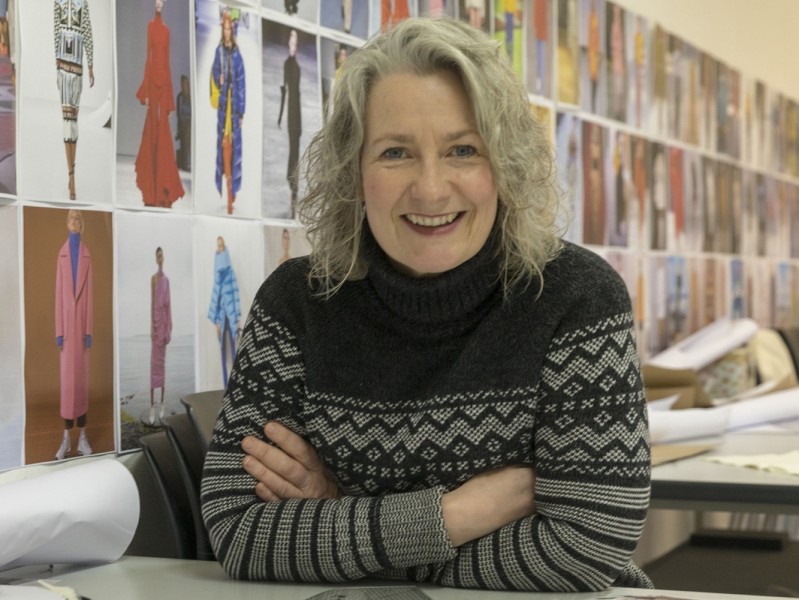Opinion Piece - Creativity and revolution - Ideas matter
Thursday 28 February 2019

Culture and creative activity play a leading role in animating a city, its spaces and its people.
But the ‘value’ of creative and cultural activity is presented normally through relatively narrow economic metrics of new job creation, revitalised tourism, visitor numbers and spend in the city.
That though is not the only, or perhaps most significant benefit that is derived from the creative sector.
I argue that any assessment of the value of culture and the creative industries must consider their impact on our experience of life, our own creativity, well-being and sense of community. Equally it must address their impact on our sense of civic pride and identity within a place.
The evidence base for such a positive impact of the creative arts on health and wellbeing is growing. Whether you are part of an audience, a creative practitioner, or partaking in the arts, they can enhance and transform your life. These benefits are not so easily developed into metrics that satisfy our pragmatism in the same way as new jobs and enhanced prosperity do, but they are fundamental in developing a resilient and sustainable city for all to enjoy and be inspired by. They are things that people feel and remember about a city.
The concept of the creative city speaks not so much of large institutions dominating the cultural and creative offering, but of people discovering a city through its pop-up culture, its festivals and galleries, studios, music venues, independent shops, creative businesses and cafes, often clustering together in ‘creative quarters’.
The richness and diversity of such activity has a significant place in shaping a creative city, generating difference, stimulating interest, and engaging residents and visitors in experiencing the life of the city far beyond the branded high street.
The Creative Industries are broadly defined by the Creative Industries Federation as “those industries which have their origin in individual creativity, skill and talent and which have a potential for wealth and job creation through the generation and exploitation of intellectual property”. The long list includes Design, the Visual Arts, Crafts, Music, Performing Arts, Architecture, IT, software and creative technologies, Gaming, Animation, Publishing, Advertising & Marketing, Film & TV, Museums, Galleries and Heritage.
There is no doubt that the UK’s Cultural and Creative economy is a huge success story. Research from NESTA (National Endowment for Science Technology and the Arts) and the Creative Industries Council, show that the Creative Industries throughout the UK are driving local and national economic growth.
The Creative Industries are a core growth sector within Scotland’s Economic Strategy; they provide the opportunity to build upon their existing strengths to increase productivity and economic growth. Indeed, the latest Scottish Quarterly GDP index data (Jan 2019) show that output from the Creative Industries rose by 4.3% over the most recent year sitting in contrast to our economy as a whole which increased by 1.5%.
Investment by cities to attract and retain creative talent and to develop their creative and cultural offering is largely on the back of an understanding that this will be of economic benefit to the city and its people. The regeneration narrative is widely understood and many UK cities including Bristol, Coventry, Glasgow, Hull and Liverpool have successfully made, or are making that journey, reaping the substantial rewards from their creative economies.
Aberdeen’s own statistics make interesting reading. NESTA reported that in 2015-16, the Creative Industries employed 3685 people working in 1248 creative businesses and collectively contributed an estimated £112 million to the local economy. Our neighbours in Dundee employed 2610 people working in 340 creative businesses and collectively contributed an estimated £49 million to the local economy. Aberdeen’s creatives are active and productive, but how do we support that growth and vitality in enabling emerging talent, creative output and ideas to be more visible within our city?
Investment and partnership, business incentives, and innovative use of spaces in the city will enable creative businesses, events, and activity to establish a stronger foothold, to exploit the tried and tested model of ‘creative clusters’ where ‘creatives’ can pull upon expertise and services in order to collaborate, share and drive creative activity.
Aberdeen’s future success in the creative industries will be dependent upon ideas and innovation, people who can think differently, people who can connect thinking across our digital and physical worlds, and who can challenge the way we do things. The characteristics of our 4th Industrial Revolution will require us to maximise our human and creative potential.
The hallmarks of our 1st industrial revolution were manufacturing processes driven by steam, and powered by coal. The invention of the internal combustion engine intensified rapid industrialisation fuelled the 2nd, and our 3rd revolution was heralded by the widespread use of electronics and information technology that facilitated automated production. History shows us that each of the industrial revolutions increases our productivity, but remove many types of jobs and roles that were undertaken in the preceding revolution.
Ideas, invention, and creative talent will be the capital that moves us forward. Individuals who can mobilise their own creative skillsets and those of others to collaborate and work in multidisciplinary teams, will be those in high demand. Creativity cannot be automated. Increasing digitisation and the development of the next wave of computer related technologies will increase the requirement for creative individuals whilst at the same time displacing a wide range of other occupations.
We must now move our thinking beyond the current concentration on STEM, to STEAM (Science, Technology, Engineering, the Arts and Maths). It is a mistake to see the arts and design as a luxury that can be ill-afforded in austere times; instead, we must include art and design subjects as a means of influencing creative connections and driving innovation, and in turn creating new opportunities for the emerging workforce of the future and deliver innovative content, experiences, services, and of course artistic and design originals that will set Aberdeen apart.
